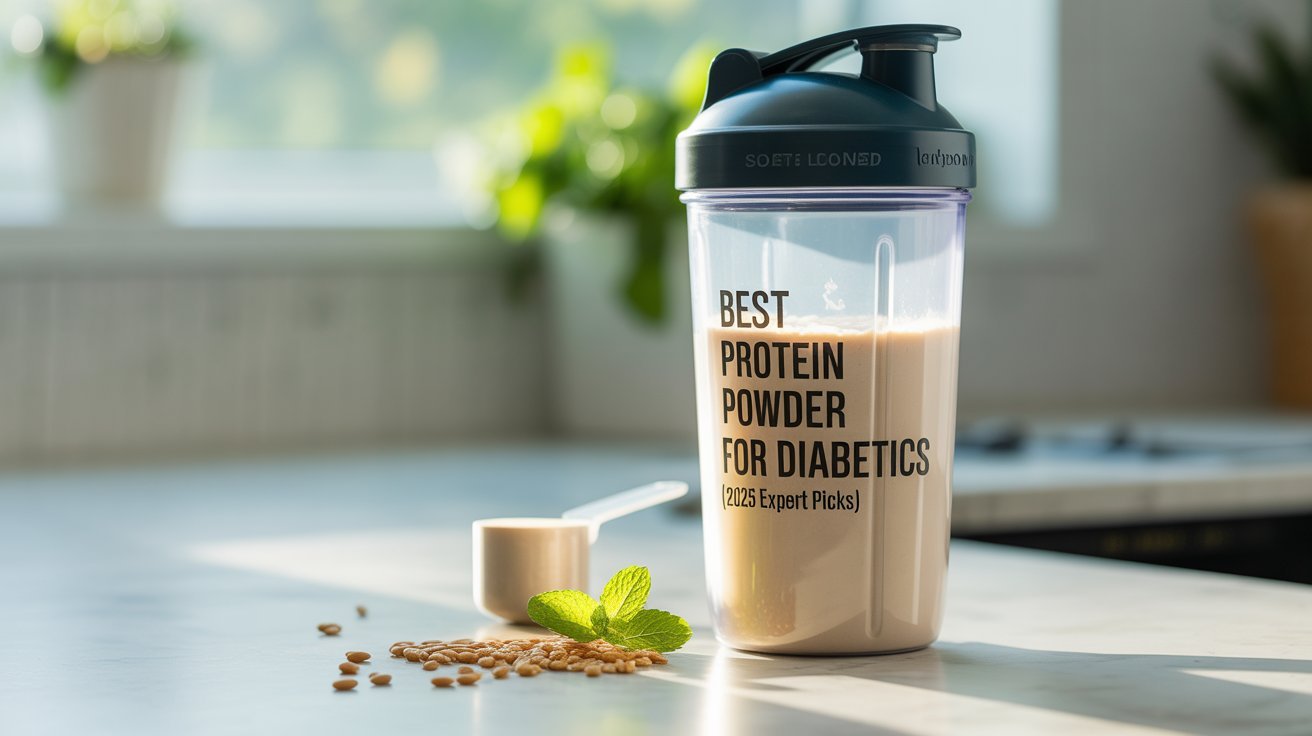Takeaways
Protein Powder for Diabetics works best when you choose whey isolate, plant-based, or collagen powders for stable blood sugar.
- Avoid added sugars, maltodextrin, or high-glycemic fillers’
- Some powders enhance satiety, aid weight management, and support muscle retention in diabetics.
- Always check for third-party testing and net carb content.
Introduction: Why Protein Matters in Diabetes
Protein Powder for Diabetics is more than just a supplement—it’s a tool for better blood sugar control. Protein plays a vital role in glucose regulation, muscle preservation, and satiety. For diabetics, the right protein powder can bridge nutrition gaps without causing dangerous glucose spikes.
Top Protein Powders for Diabetics (2025 Expert Picks)
| Brand | Type | Grams Protein | Carbs | Sweetener | Key Benefit |
|---|---|---|---|---|---|
| Orgain Clean | Plant-Based | 21g | 3g | Stevia | Organic, low GI |
| Dymatize ISO100 | Whey Isolate | 25g | 2g | Sucralose | Fast-digesting |
| Garden of Life | Plant-Based | 22g | 4g | None | Raw & Clean |
| Levels Grass-Fed | Whey Conc. | 24g | 3g | Monk Fruit | Minimal processing |

How to Read a Protein Powder Label If You’re Diabetic
When evaluating protein powder for diabetics, look for:
Net carbs under 5g
No added sugars or corn syrup
Sweeteners like stevia, erythritol, or monk fruit
High protein-to-carb ratio
Avoid ❌ dextrins, artificial dyes, and sugar alcohols that can cause GI distress.
Whey vs. Plant-Based Protein: Which Is Better for Blood Sugar?
- Whey isolate: rapidly absorbed, insulinogenic, but very low in carbs.
- Plant proteins (pea, rice): slower-digesting, better for satiety.
Best Choice for Type 2: Plant blends with fiber
Best Choice for Type 1 (active): Whey isolate
Budget-Friendly Protein Powder for Diabetics
Safe yet affordable options include:
- NOW Sports Whey Isolate
- Bulk Supplements Pea Protein
- Purely Inspired Organic Protein
Cultural Considerations: Protein Powders in South Asian or Mediterranean Diets
Since many traditional diets are carb-heavy (roti, rice, lentils), protein powder for diabetics can help balance blood sugar after high-GI meals.
Example Plan:
- Morning: Unsweetened Greek yogurt + scoop of whey
- Evening: Lentil soup + small plant-protein shake
Should Diabetics Avoid Protein Powders With Artificial Sweeteners?
It depends. Sucralose and aspartame are technically safe but may impact gut health in some people. Stevia and monk fruit remain the gold standard sweeteners for protein powder for diabetics.
When & How to Take Protein Powder for Best Results
- Post-workout (especially strength training)
- With meals to reduce blood sugar spikes
- As a meal replacement (with added fiber and healthy fats)
What to Ask Your Doctor or Dietitian
- Does this protein powder for diabetics suit my medication schedule?
- Can I safely take it during fasting?
- Should I combine it with fiber or healthy fats?
Conclusion
The right protein powder for diabetics can be a game-changer—supporting blood sugar control, satiety, and muscle health. Look for low-carb, no added sugar, and third-party tested options. Tailor intake to your lifestyle and always consult your healthcare provider before making changes.












